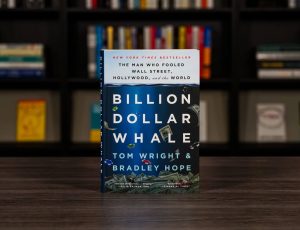
Why I discourage early-stage founders from pursuing 2 business models?
Yesterday, I was eagerly waiting to see a startup’s pitch as it was creating a name for itself in a niche space growing globally. It would be an understatement to say that I was looking forward to funding this startup. The pitch started well, but it got seriously derailed about 15 minutes when the founder revealed a significant pivot.
To compensate for the losses incurred during the pandemic, the founder started a B2B business that generated revenues and helped the overall business survive. It was a much-needed move that many of our portfolio companies indulged in to survive – no harm in that. However, as the primary space revived, the founder wanted to continue both business models (B2B SaaS and D2C). He found it challenging to drop a business that was generating revenues during the down months.
I realize that many founders face similar questions as they help their businesses recover from the hit taken by COVID19 2.0. Besides, it is unlike me to stop a revenue stream unless – it is diluting the unique positioning of the business. I believe early-stage founders must keep a razor-sharp focus on cementing their position in a category, especially when creating a niche category in a clearly crowded space.
B2B SaaS or consulting revenues are essential to keep yourself and your business afloat while you’re bootstrapping (or struggling through lockdowns). But you should not allow those ancillary businesses to cloud your original ambition, i.e., to be the number 1 player in your category. If you must exist in 2 categories, you must be number 1 in each – not easy on an early-stage budget!
Besides, if you find that your new business model is much better than the previous one, drop the old one and put your efforts into the new one. Many founders have found themselves gasping for air as they lose balance and fall flat into deep water when they try to run 2 speedboats parallelly and at the same speed.
Therefore when you are pitching, pitch 1 business model, the new or the old. Trying to marry 2 different businesses as 1 may make sense to you theoretically. But practically, it requires a massive suite of managers – something (once again) an early-stage venture could rarely afford.
It is fate that my guest on DamaniTalks tonight will answer this precise question.
Kailash Katkar started his journey of building a cybersecurity company as a school dropout. First, he learned how to repair calculators and radios, eventually graduating (on-the-job) to repairing computers in 1993.
He learned about the software issues his clients faced with viruses. This was a time when more than 98% of computers in India ran pirated Windows OS for the unaware. So he decided to make a significant pivot from repairing computers to protecting them from viruses with his anti-virus software.
But in true Hernan Cortez style, Kailash shut down the hardware business to ensure that he had no option but to succeed in the software business that he correctly predicted would be the future of technology. He went through many teething issues with his pivot, but with no option to retreat, he built a software licensing business in a market where 91% of computers get loaded with pirated software.
Today at 9 pm, he shares in the 28-year journey as an Indian entrepreneur that raised capital from the likes of Sequoia and (eventually) from the public markets!
Join us live right here at 9 pm today:




